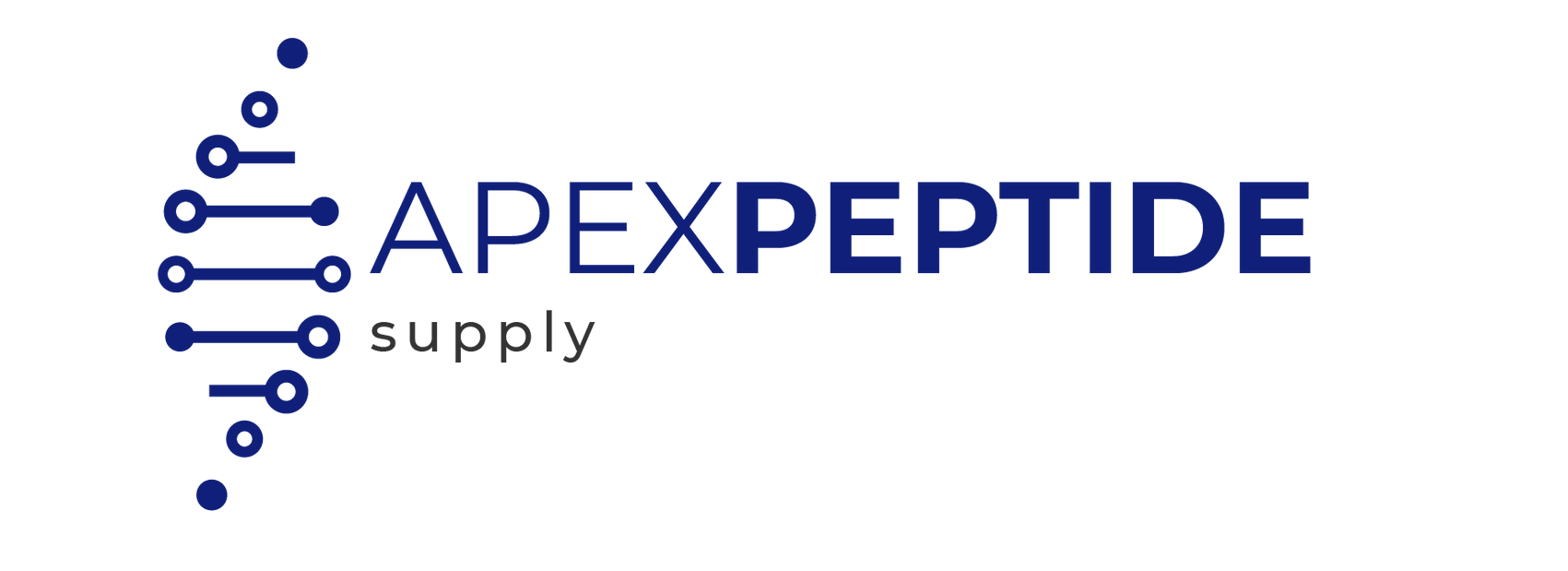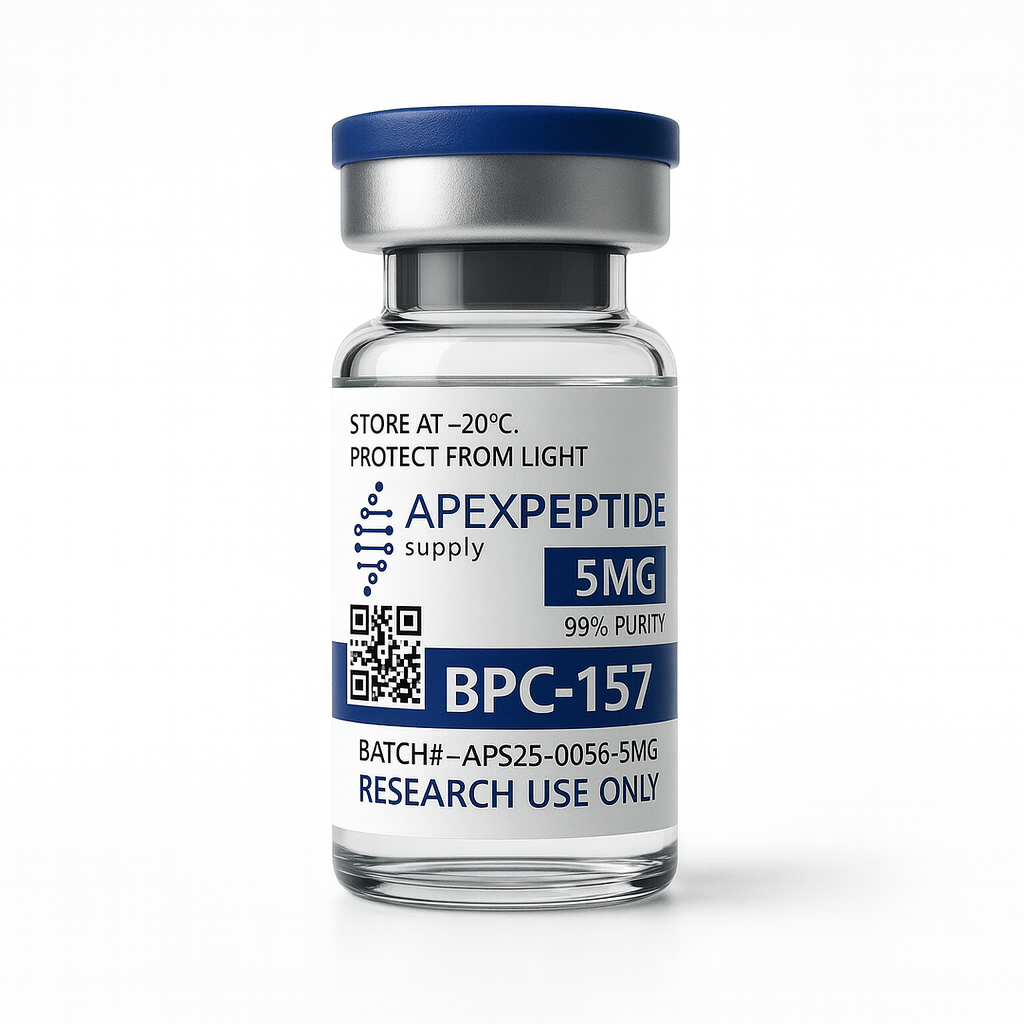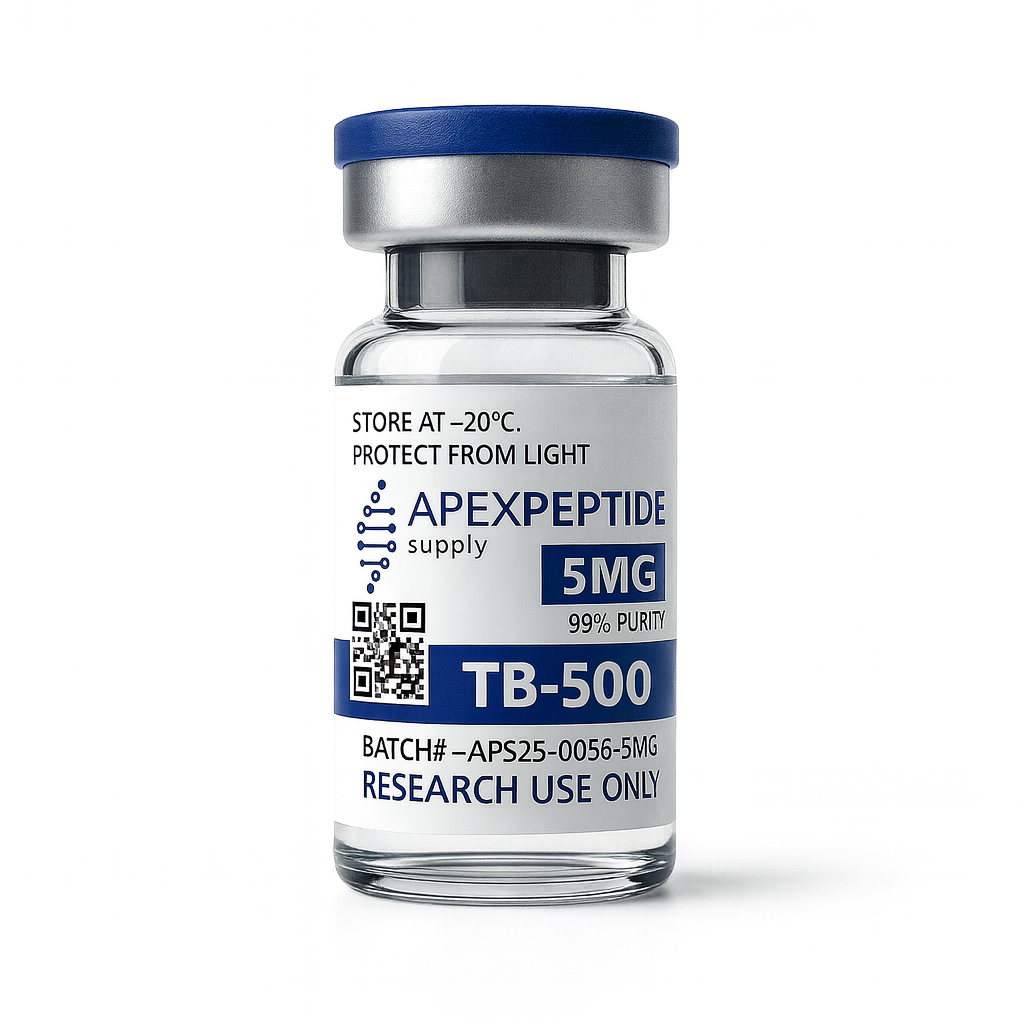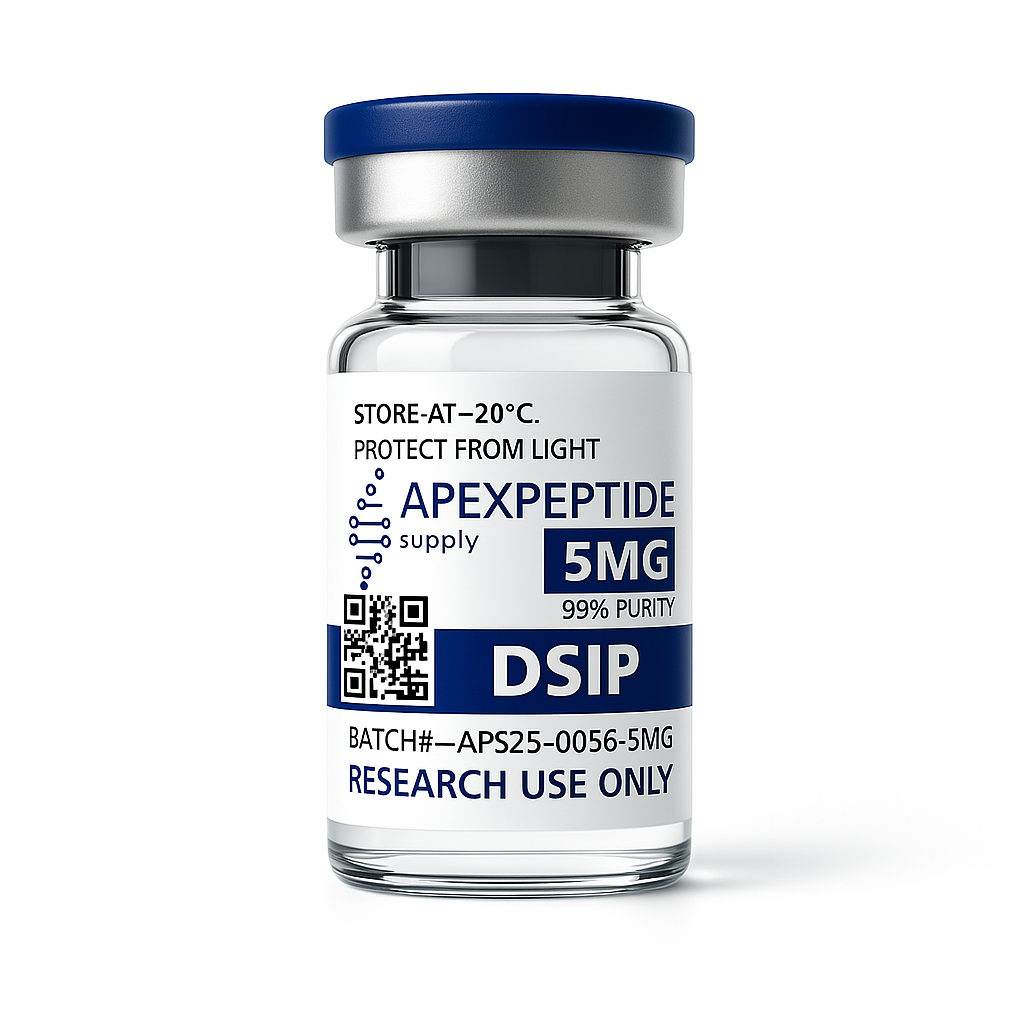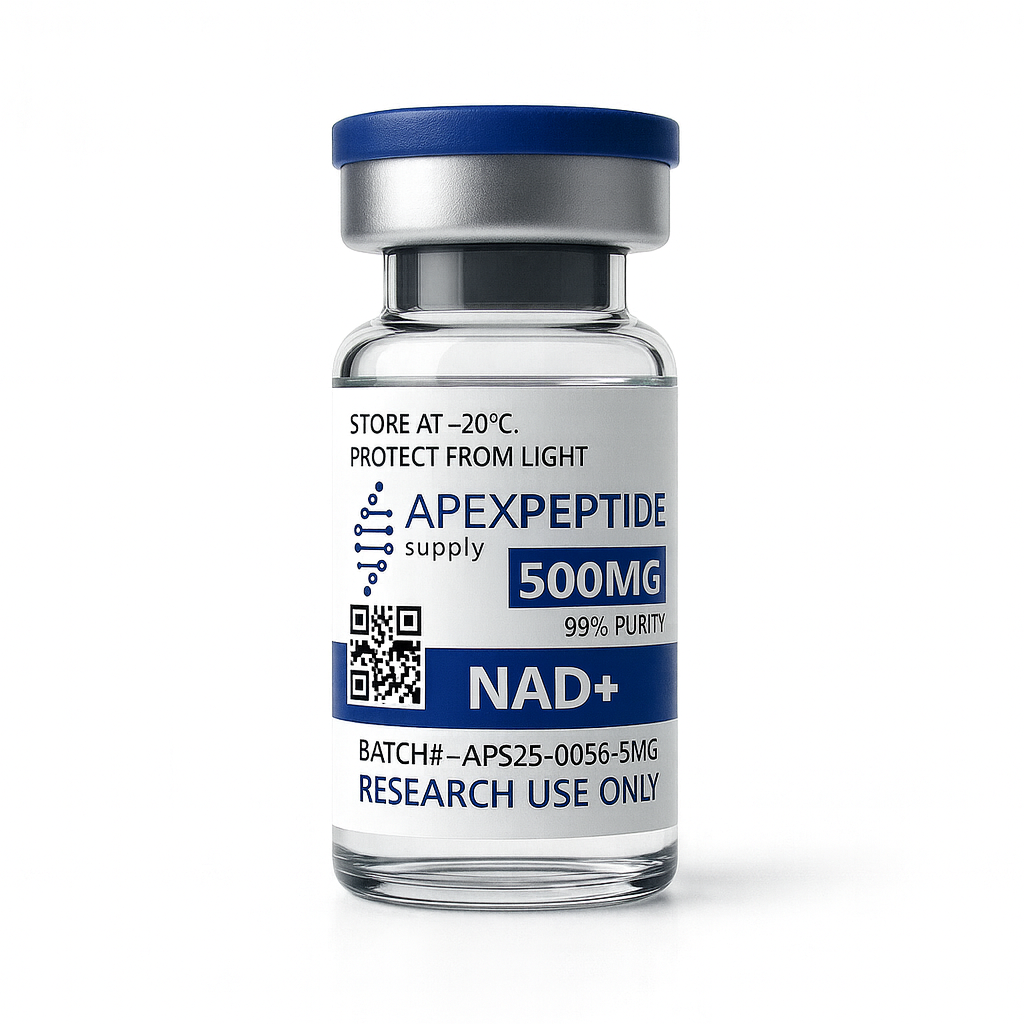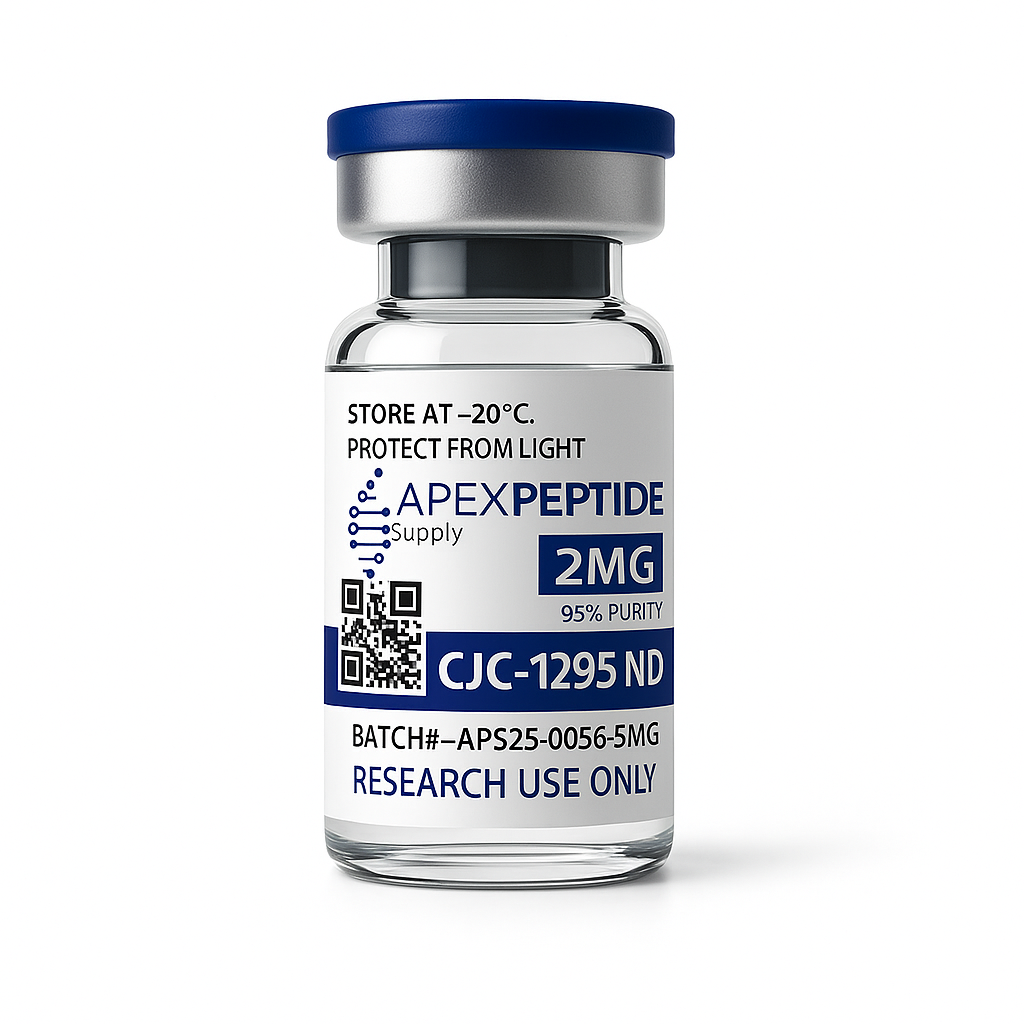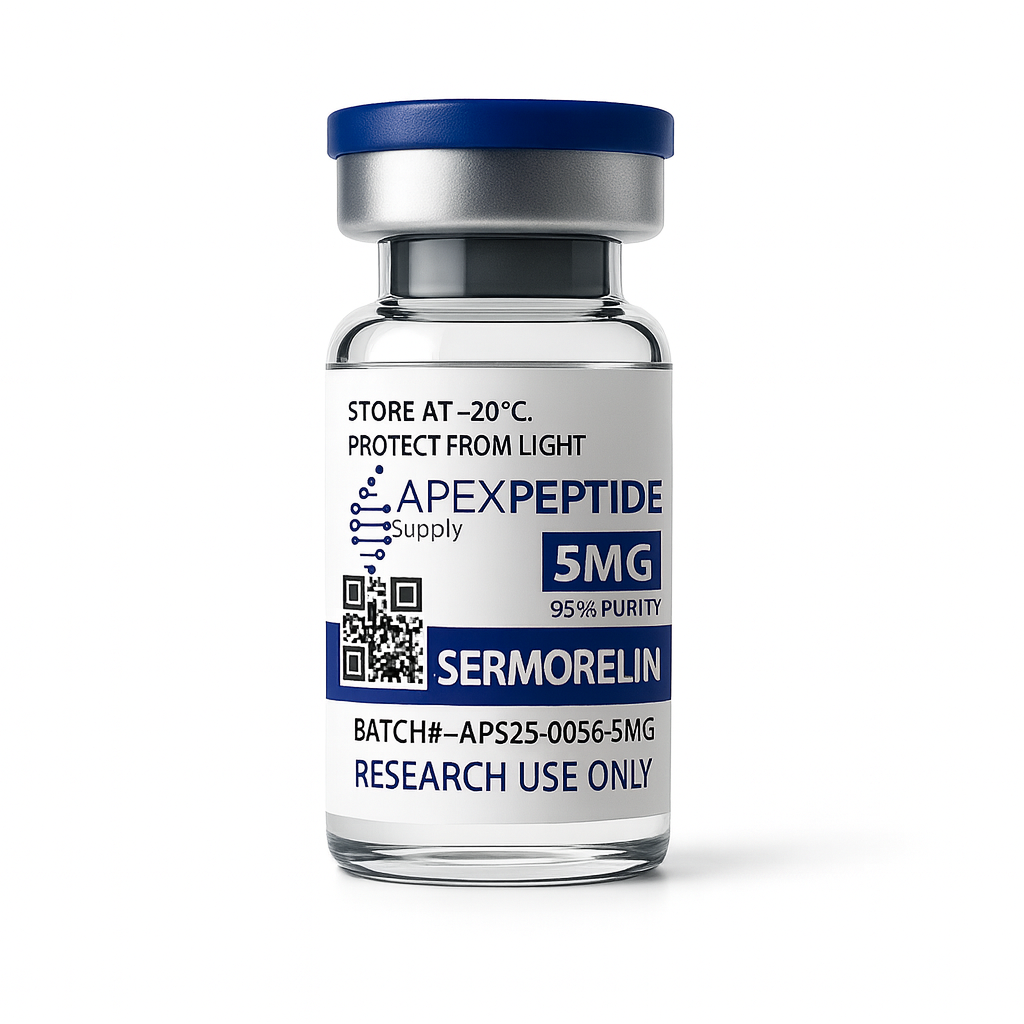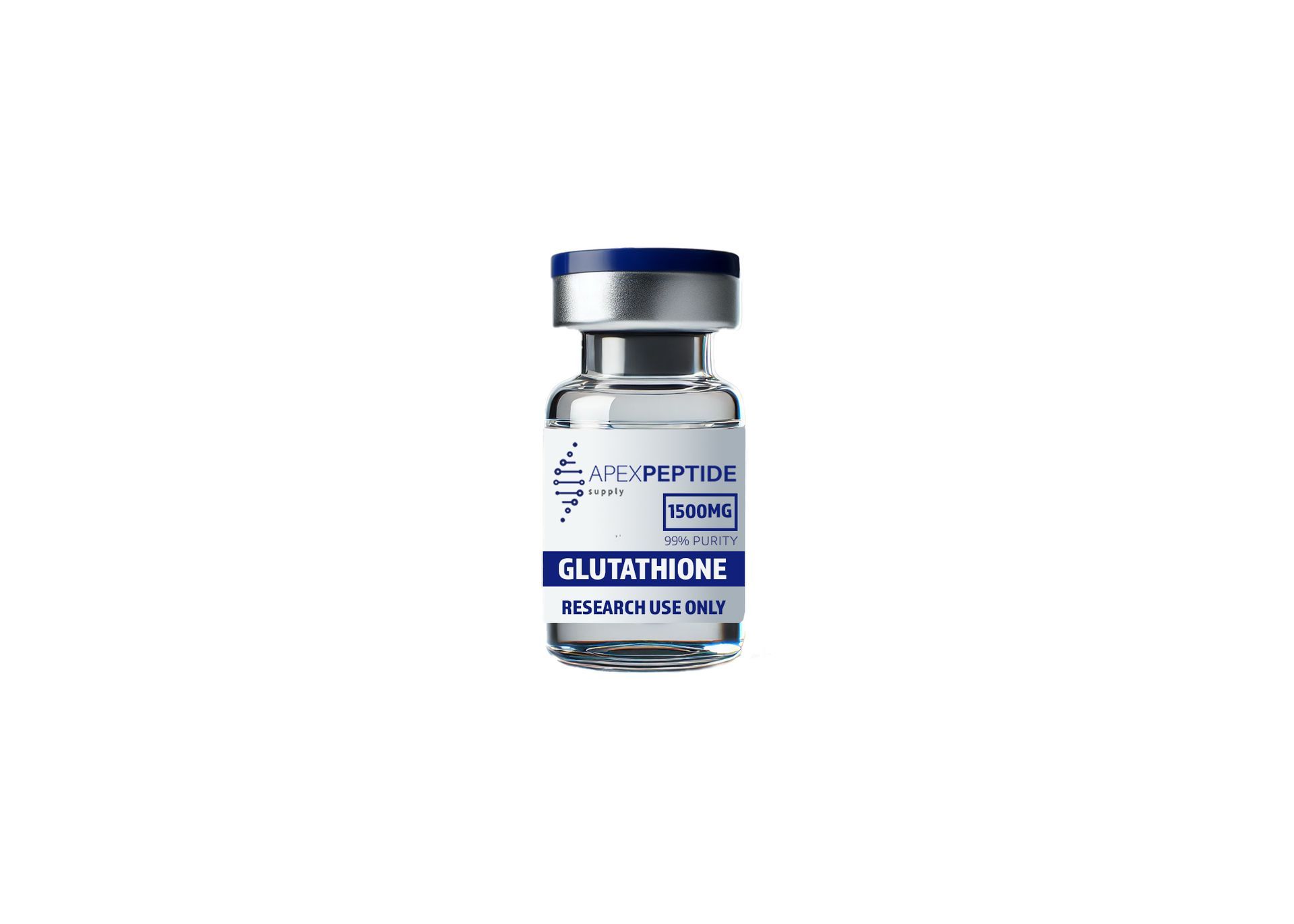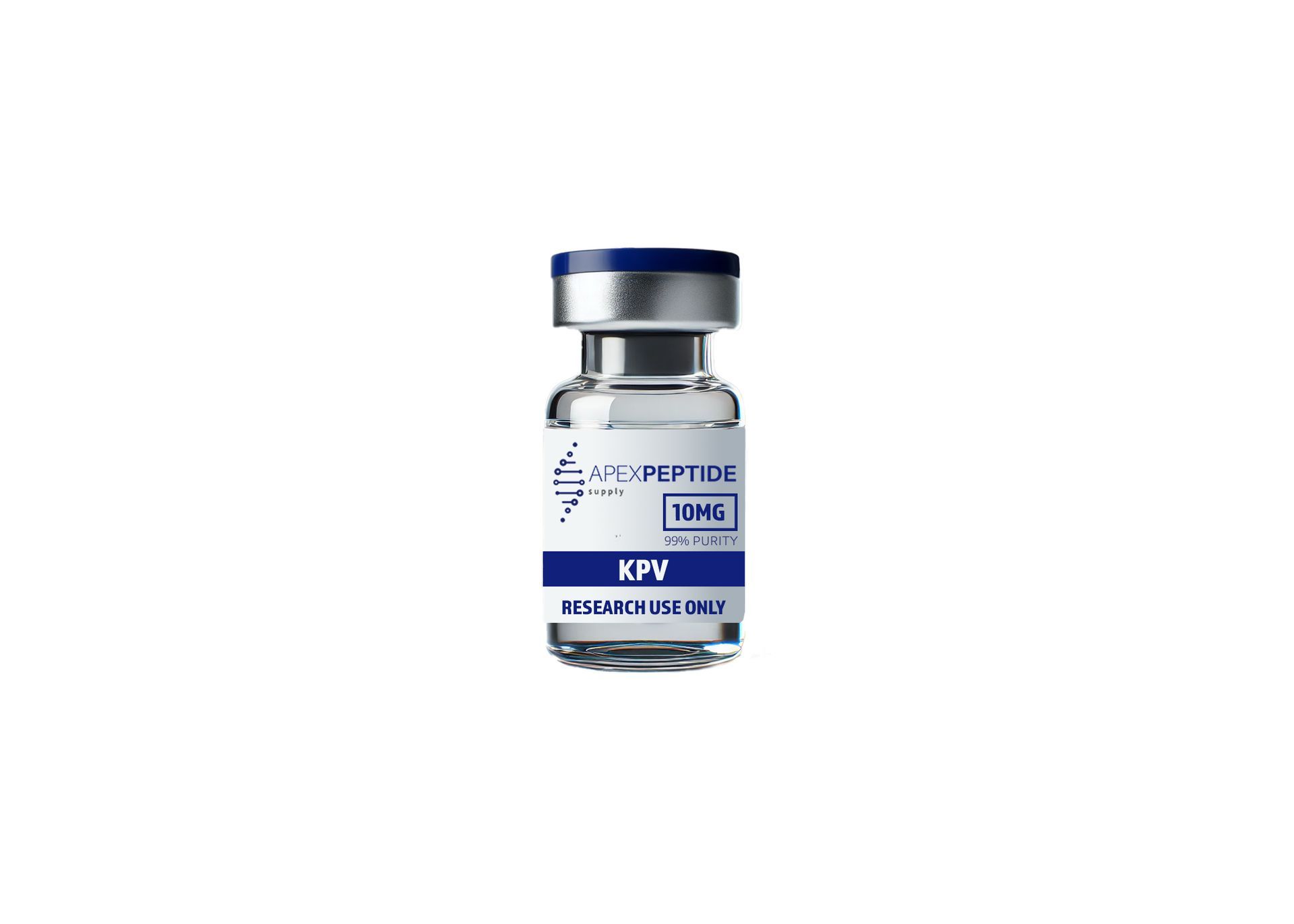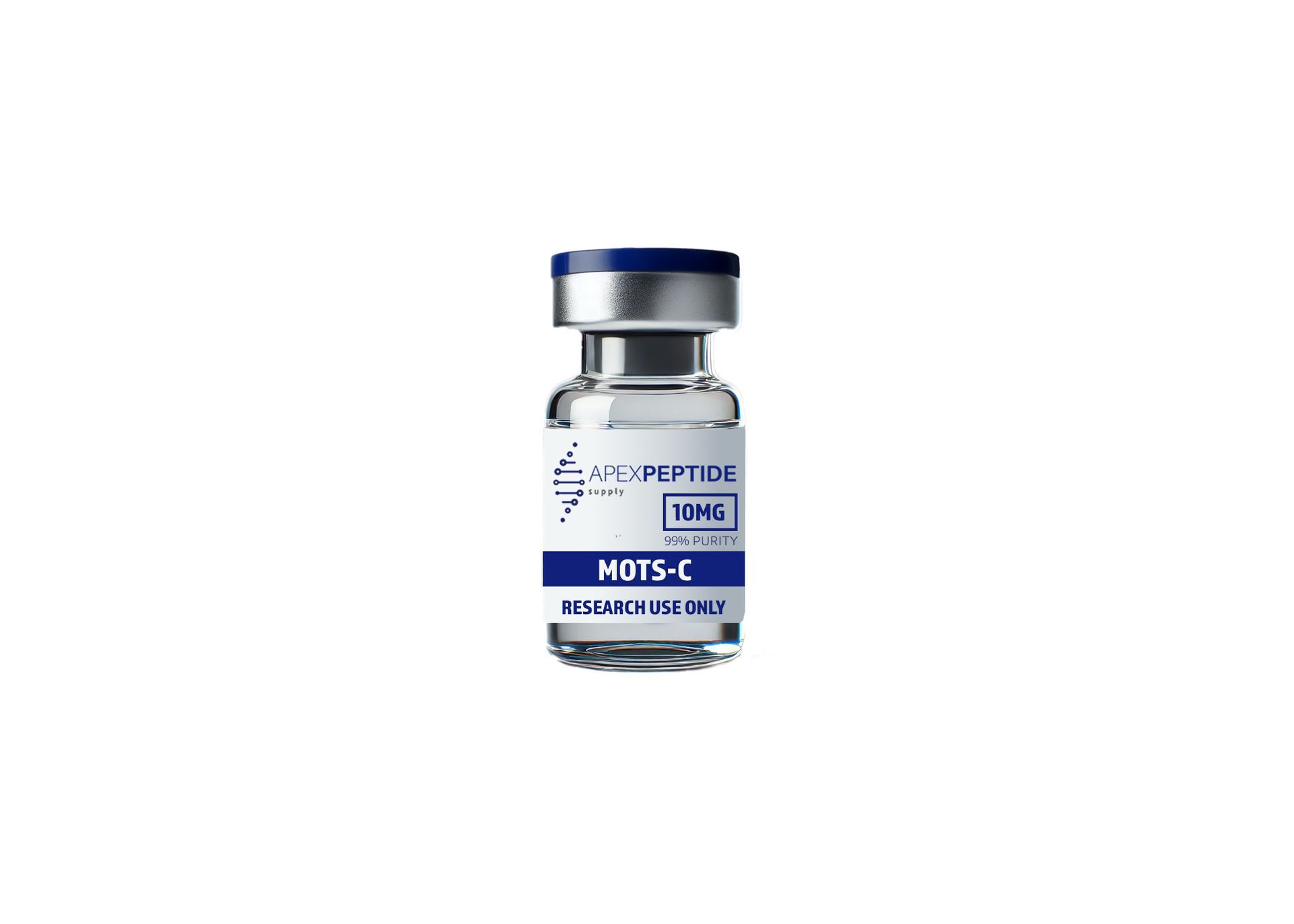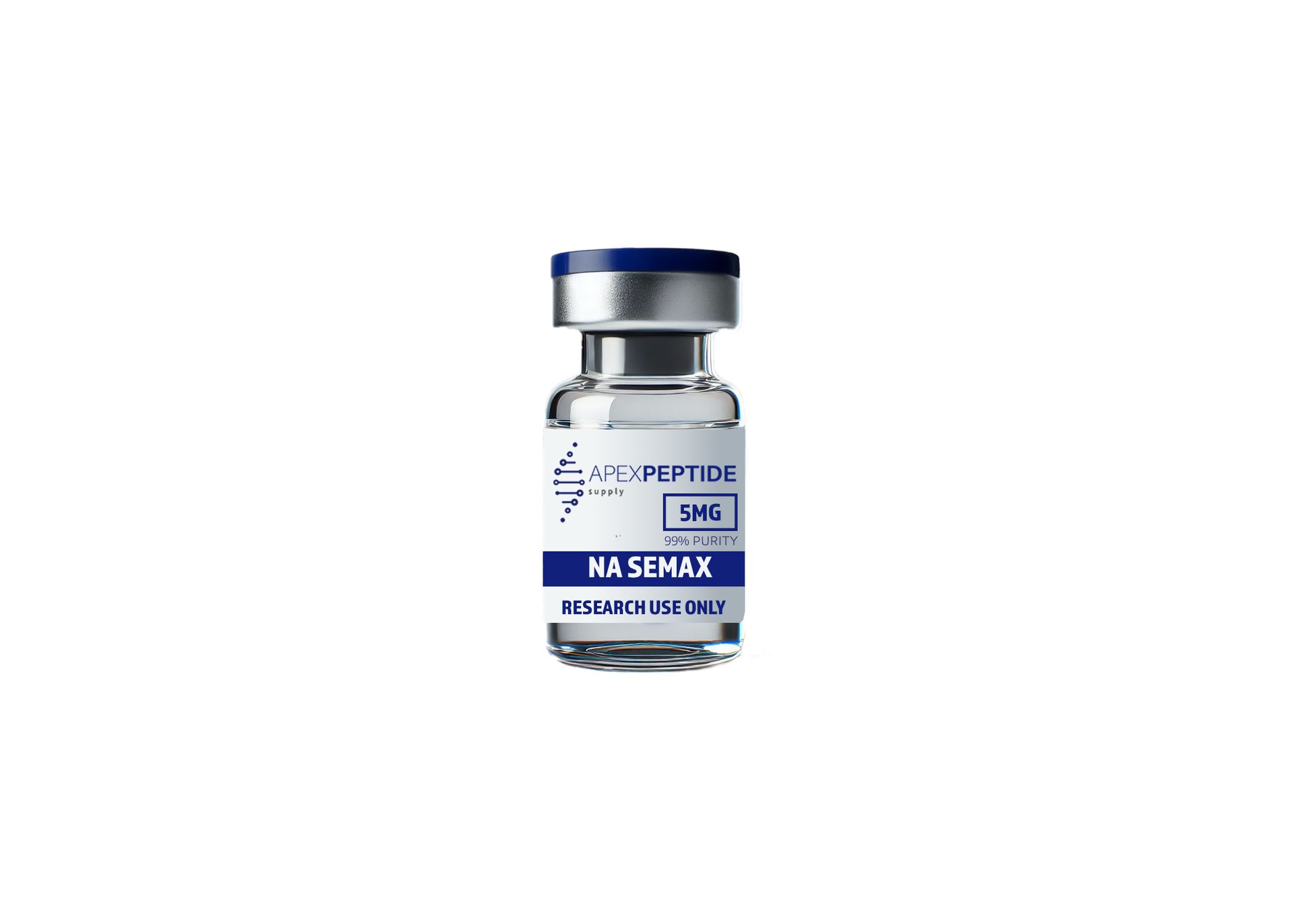At Apex Peptides, we believe every compound holds the potential to drive discovery. Our curated selection of high-purity research peptides is third-party lab-tested and supplied exclusively for scientific investigation. Whether your work focuses on cellular models, signaling pathways, or biochemical mechanisms, our peptides are prepared to support reproducible, in vitro research under controlled laboratory conditions. Because when the science is precise, discovery moves forward.
BPC-157
BPC-157 – 99% Purity | Research-Grade Peptide
Molecular Formula: C₆₂H₉₈N₁₆O₂₂
Molecular Weight: 1419.53552 g/mol
Sequence: Gly-Glu-Pro-Pro-Pro-Gly-Lys-Pro-Ala-Asp-Asp-Ala-Gly-Leu-Val
Research Applications May Include:
- Cellular Mechanisms - Studies have examined how BPC-157 may influence pathways involved in cellular signaling and structural integrity.
- Angiogenesis models - Research has explored its potential role in vascular growth and endothelial cell behavior.
- Gastrointestinal biology - Preclinical experiments have looked at interactions with gastric and intestinal tissues.
- Neurological pathways - Laboratory studies have investigated possible effects on neurotransmitter systems and neural recovery processes.
- Musculoskeletal research - Animal models have evaluated peptide activity in relation to tendon, ligament and bone tissue responses.
Compliance Disclaimer
All products are for research purposes only. This product is not approved by the FDA or any regulatory agency for therapeutic use. By purchasing, you agree to use this material in accordance with all applicable laws and regulations.
TB-500
DSIP – 99% Purity | Research-Grade Peptide
Molecular Formula: C₂₁₂H₃₅₀N₅₆O₇₈S
Molecular Weight: 4963 g/mol
CAS Number: 77591-33-4
Form: Lyphosized Powder
Synonyms: Thymosin Beta-4 Acetate, Tβ4 Fragment, TB500
Research Applications May Include:
- Angiogenesis Research – Preclinical models have studied TB-500 in relation to vascular growth and endothelial cell activity.
- Cellular Migration Studies – Laboratory experiments have investigated TB-500’s role in processes linked to cell movement and tissue modeling.
- Musculoskeletal Models – Research has explored TB-500 in tendon, ligament, and skeletal muscle laboratory settings.
- Cardiac and Vascular Biology – TB-500 has been studied in experimental models involving cardiovascular and vascular tissue responses.
- Wound Response Pathways – Preclinical studies have examined TB-500 as a model compound in research on tissue response and repair mechanisms.
Compliance Disclaimer
All products are for research purposes only. This product is not approved by the FDA or any regulatory agency for therapeutic use. By purchasing, you agree to use this material in accordance with all applicable laws and regulations.
DSIP
DSIP – 99% Purity | Research-Grade Peptide
Molecular Formula: C₃₅H₄₉N₁₁O₁₅
Molecular Weight: 848.81 g/mol
Sequence: Trp-Ala-Gly-Gly-Asp-Ala-Ser-Gly-Glu
Research Applications May Include:
- Neuropeptide Biology – DSIP has been examined in laboratory models exploring regulatory peptide systems and signaling pathways.
- Stress Response Studies – Preclinical research has investigated DSIP in relation to stress and adaptation models.
- Sleep–Wake Cycle Models – Experimental settings have included DSIP in studies of circadian rhythm and sleep regulation mechanisms.
- Protein and Neurochemical Interactions – DSIP has been studied as a model peptide in research involving neurotransmitter activity and biochemical pathways.
- Peptide Science Models – Researchers have used DSIP as a reference compound for examining peptide structure and function in laboratory contexts.
Compliance Disclaimer
All products are for research purposes only. This product is not approved by the FDA or any regulatory agency for therapeutic use. By purchasing, you agree to use this material in accordance with all applicable laws and regulations.
GHK_CU
GHK-Cu – 99% Purity | Research-Grade Peptide-Copper Complex
Molecular Formula: C₁₄H₂₄N₆O₄Cu
Molecular Weight: 340.8 g/mol
Sequence: Gly-His-Lys·Cu²⁺
Research Applications May Include:
- Peptide–metal binding studies – Laboratory research exploring the binding interactions of GHK with copper ions.
- Extracellular matrix investigations – Studies examining the role of GHK-Cu in collagen-related pathways and matrix protein dynamics.
- Cell signaling models – Preclinical experiments assessing how GHK-Cu may influence biochemical signaling pathways.
- Gene expression research – Research examining GHK-Cu as a model compound in the study of transcriptional activity and regulatory mechanisms.
- Oxidative stress pathways – Laboratory studies evaluating GHK-Cu in relation to antioxidant response systems.
Regulatory Notice
This compound is for laboratory research purposes only and is not approved by the FDA or any regulatory agency for therapeutic or diagnostic use in humans or animals. All information provided is for educational and scientific reference only. By purchasing, you agree to use this product in compliance with applicable laws and guidelines.
Research Applications May Include:
- Redox Biology and Oxidative Stress Models – Laboratory research has investigated NAD⁺ as a coenzyme involved in electron transfer, redox balance, and oxidative stress response pathways.
- Cellular Energy and Metabolic Pathway Studies – Preclinical models have explored NAD⁺ in relation to glycolysis, the citric acid cycle, and oxidative phosphorylation as part of cellular energy metabolism research.
- Mitochondrial Function and Bioenergetics Research – NAD⁺ has been studied in laboratory settings for its role in mitochondrial activity, ATP production, and bioenergetic regulation.
- DNA Repair and Genomic Stability Investigations – Research models have included NAD⁺ in the study of DNA repair enzymes, PARP activation, and cellular genomic maintenance.
- Sirtuin and Protein Signaling Pathway Studies – Experimental research has examined NAD⁺ as a model compound for studying sirtuin activity, protein signaling, and regulatory pathways in cell biology.
Regulatory Disclaimer
This product is not approved by the FDA or any international regulatory agency for therapeutic, diagnostic, or human use. It is intended for research purposes only. Any information on biological function or potential application is based on preclinical studies and is provided strictly for educational and reference purposes. By purchasing this product, the buyer agrees to use it in compliance with all applicable research laws and institutional guidelines.
CJC-1295 NO DAC
CJC-1295 (No DAC) – 99% Purity Research-Grade Peptide
Molecular Formula: C₁₅₂H₂₅₂N₄₄O₄₂
Molecular Weight: 3367.84 g/mol
Form: Lyophilized Powder
CAS Number: 863288-34-0
Sequence: Tyr-Ala-Asp-Ala-Ile-Phe-Thr-Asn-Ser-Tyr-Arg-Lys-Val-Leu-Gly-Gly-Ser-Ser-Ala-Phe-Ile-Asn-Phe-Ala-Ser-Ile-Ile-Tyr-Gln-Leu
Research Applications May Include:
- Growth Hormone Releasing Factor (GRF) Models – CJC-1295 No DAC has been examined in laboratory studies as a modified analog of GRF (1-29), useful for investigating growth hormone–related pathways.
- Peptide Structure and Stability Research – Preclinical models have included CJC-1295 No DAC in studies on peptide half-life, degradation, and molecular stability compared to unmodified GRF.
- Endocrine Signaling Pathways – Research has explored CJC-1295 No DAC as a model compound for studying pituitary and hypothalamic signaling mechanisms.
- Receptor Binding Studies – Laboratory experiments have assessed CJC-1295 No DAC in relation to its interaction with growth hormone releasing hormone (GHRH) receptors.
- Comparative Peptide Biology – CJC-1295 No DAC has been used in experimental settings to compare biological activity with other synthetic growth hormone secretagogues.
Regulatory Disclaimer
This product is not approved by the FDA or any international regulatory agency for therapeutic, diagnostic, or human use. It is intended for research purposes only. Any information on biological function or potential application is based on preclinical studies and is provided strictly for educational and reference purposes. By purchasing this product, the buyer agrees to use it in compliance with all applicable research laws and institutional guidelines.
Sermorelin
Sermorelin—99% Purity | Research-Grade GHRH Analog Peptide
Molecular Formula: C₁₄₉H₂₄₆N₄₄O₄₂
Molecular Weight: 3357.96 g/mol
CAS Number: 86168-78-7
Form: Lyophilized Powder
Synonyms: GRF (1–29), Sermorelin Acetate
Sequence: Tyr-Ala-Asp-Ala-Ile-Phe-Thr-Asn-Ser-Tyr-Arg-Lys-Val-Leu-Gly-Gln-Leu-Ser-Ala-Arg-Lys-Leu-Leu-Gln-Asp-Ile-Met-Ser-Arg
Research Applications May Include:
- Endocrine Pathway Models – Laboratory studies have investigated Sermorelin as a tool for exploring growth hormone–releasing hormone (GHRH) receptor activity and pituitary signaling.
- Neuroendocrine Research – Preclinical experiments have included Sermorelin in studies of hypothalamic-pituitary axis dynamics and peptide-based communication pathways.
- Peptide Structure and Function Studies – Researchers have examined Sermorelin’s truncated 29–amino acid sequence in relation to peptide stability and receptor binding.
- Comparative Peptide Biology – Investigations have compared Sermorelin with other synthetic GHRH analogs to better understand differences in activity and half-life.
- Metabolic and Musculoskeletal Models – Experimental research has referenced Sermorelin in relation to growth hormone regulation within metabolic and musculoskeletal contexts.
Regulatory Disclaimer
This product is not approved by the FDA or any other regulatory body for human or animal use. It is offered solely for scientific research purposes. Any reference to biological function is sourced from third-party academic studies and is intended for informational purposes only. By purchasing this product, the buyer agrees to use it in compliance with all applicable laws and research regulations.
Glutathione
Glutathione (GSH)—99% Purity | Research-Grade Tripeptide
Molecular Formula: C₁₀H₁₇N₃O₆S
Molecular Weight: 307.32 g/mol
Sequence: γ-L-Glutamyl-L-cysteinylglycine
Potential Research Applications
- Oxidative stress and antioxidant response studies
- Cellular detoxification and heavy metal chelation models
- Mitochondrial health and redox signaling research
- Investigations into immune response and inflammatory modulation
- DNA and protein damage prevention models
Regulatory Disclaimer
This product is provided for research use only. It is not approved by the FDA or any other regulatory body for human consumption or medical treatment. Any information regarding biological activity is based on third-party preclinical studies and is offered for scientific reference only. By purchasing, the buyer agrees to use this product in compliance with all applicable laws and regulations.
KPV
KPV – 99% Purity | Research-Grade Tripeptide
Molecular Formula: C₁₈H₃₃N₇O₄
Molecular Weight: 411.51 g/mol
Sequence: Lys-Pro-Val
Potential Research Applications
- In vitro models of inflammatory response modulation
- Gastrointestinal epithelial barrier repair studies
- Research into skin inflammation and wound healing
- Cytokine inhibition studies (e.g., IL-1, TNF-α, IL-6)
- Mucosal immunity and oxidative stress pathway investigations
Regulatory Disclaimer
All products sold are for research purposes only. This compound is not intended for human consumption or for use in any clinical or therapeutic setting. All descriptions are based on preclinical research data and are provided for informational purposes only. By purchasing, the customer agrees to use this product in accordance with all applicable laws and research regulations.
MOTS-C
MOTS-c – 99% Purity | Mitochondrial-Derived Research Peptide
Molecular Formula: C₄₉H₇₅N₁₇O₁₄
Molecular Weight: 1367.63 g/mol
Sequence: Met-Arg-Trp-Gln-Glu-Met-Gly-Tyr-Ile-Phe-Tyr-Pro-Arg-Lys-Leu-Arg
Potential Research Applications
- Mitochondrial function and bioenergetics studies
- Investigations into age-related metabolic decline
- Preclinical models of insulin resistance and glucose metabolism
- Cellular stress and AMPK pathway activation research
- Muscle performance and fatigue resistance studies
Regulatory Disclaimer
This product is for research purposes only and is not approved by the FDA or any other regulatory body for human or animal use. Any references to biological effects are derived from published scientific literature and are presented for informational purposes only. By purchasing, you agree to use this product solely in compliance with all applicable research laws and institutional guidelines.
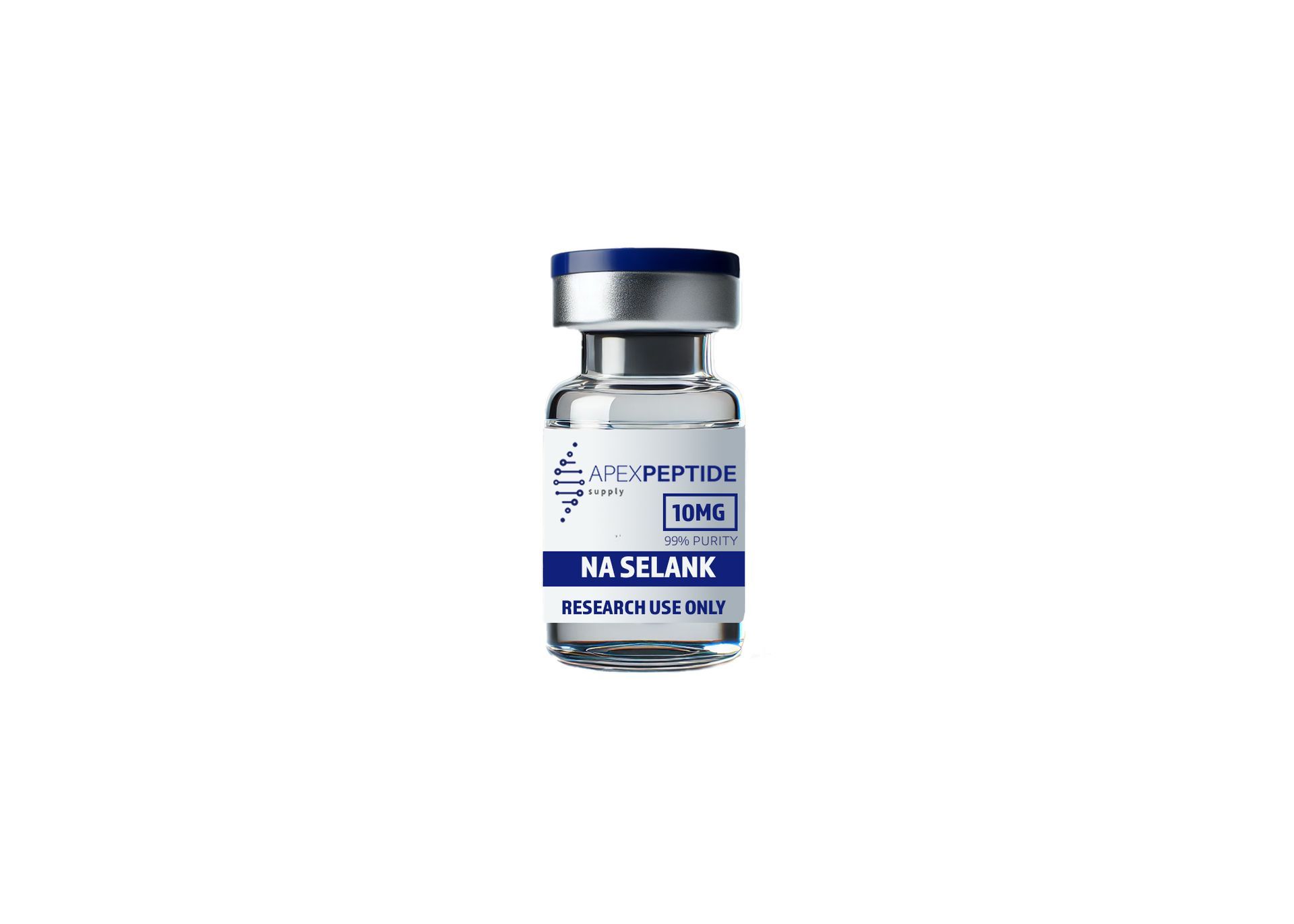
NA SELANK
NA-Selank – 99% Purity | N-Acetyl Selank Research Peptide
Molecular Formula: C₃₃H₅₇N₁₁O₉
Molecular Weight: 751.88 g/mol
Sequence: N-Acetyl-Thr-Lys-Pro-Arg-Pro-Gly-Pro
Potential Research Applications
- Neurochemical pathway modulation in anxiety and mood models
- Serotonin and dopamine signaling investigations
- Cognitive enhancement and memory retention studies
- Preclinical models of immune response and inflammation regulation
- Exploration of stress adaptation mechanisms in the central nervous system
Regulatory Disclaimer
NA-Selank is not approved by the FDA or any global regulatory authority for human use. This product is for research purposes only. Any discussion of biological effects is derived from third-party academic and preclinical studies and is presented strictly for informational and scientific reference. By purchasing, the buyer agrees to use this product in compliance with all relevant laws and research standards.
NA SEMAX
NA-Semax – 99% Purity | N-Acetyl Semax Research Peptide
Molecular Formula: C₃₇H₅₁N₉O₁₀
Molecular Weight: 811.86 g/mol
Sequence: N-Acetyl-Met-Glu-His-Phe-Pro-Gly-Pro
Potential Research Applications
- Cognitive and memory enhancement in preclinical behavioral models
- Neuroprotection and neuroplasticity research
- Modulation of BDNF and other neurotrophic signaling pathways
- Investigations into anxiety, depression, and adaptive stress response
- Inflammatory and immune modulation in CNS models
Regulatory Disclaimer
NA-Semax is not approved by the FDA or any global regulatory body for human or veterinary use. It is for research purposes only. All information provided is based on independent scientific literature and is for educational and reference use by qualified researchers only. By purchasing, you acknowledge and agree to use this product in accordance with all applicable laws and institutional guidelines.
